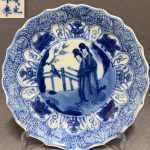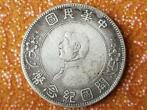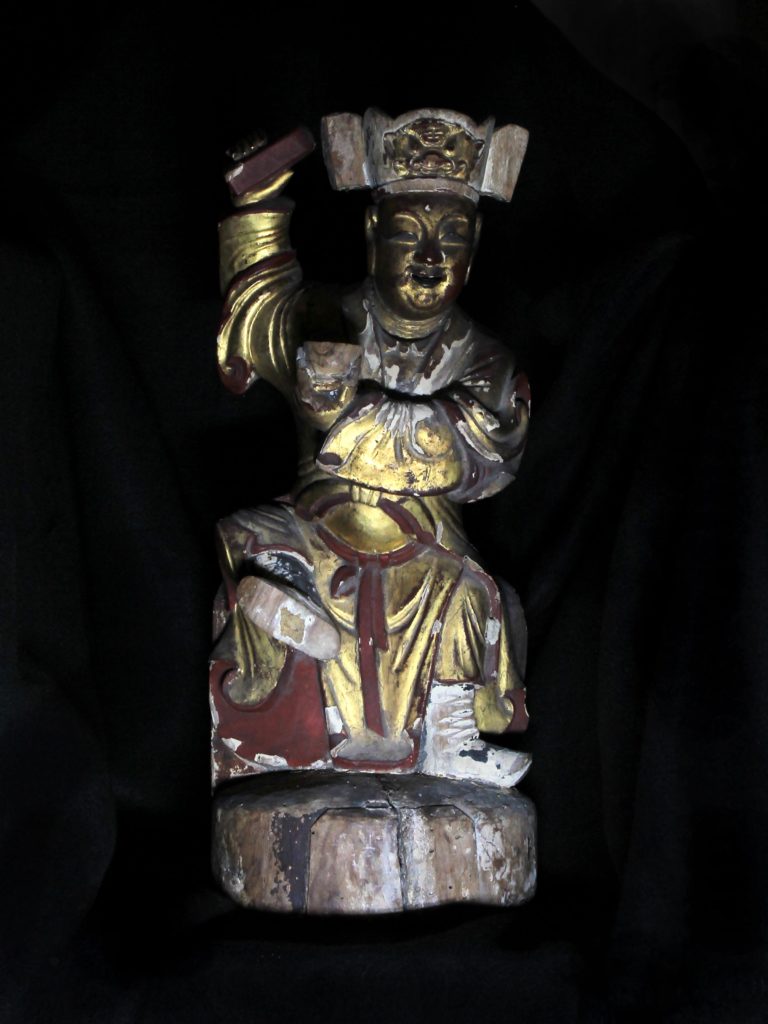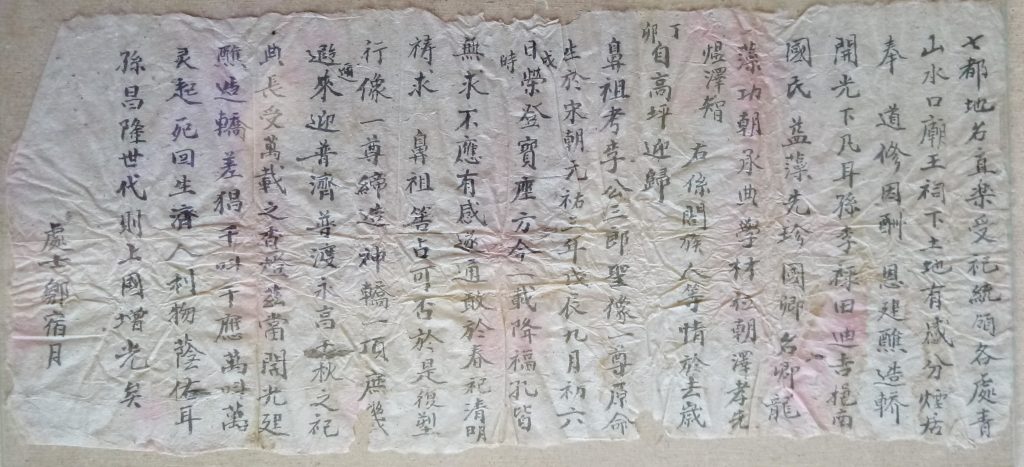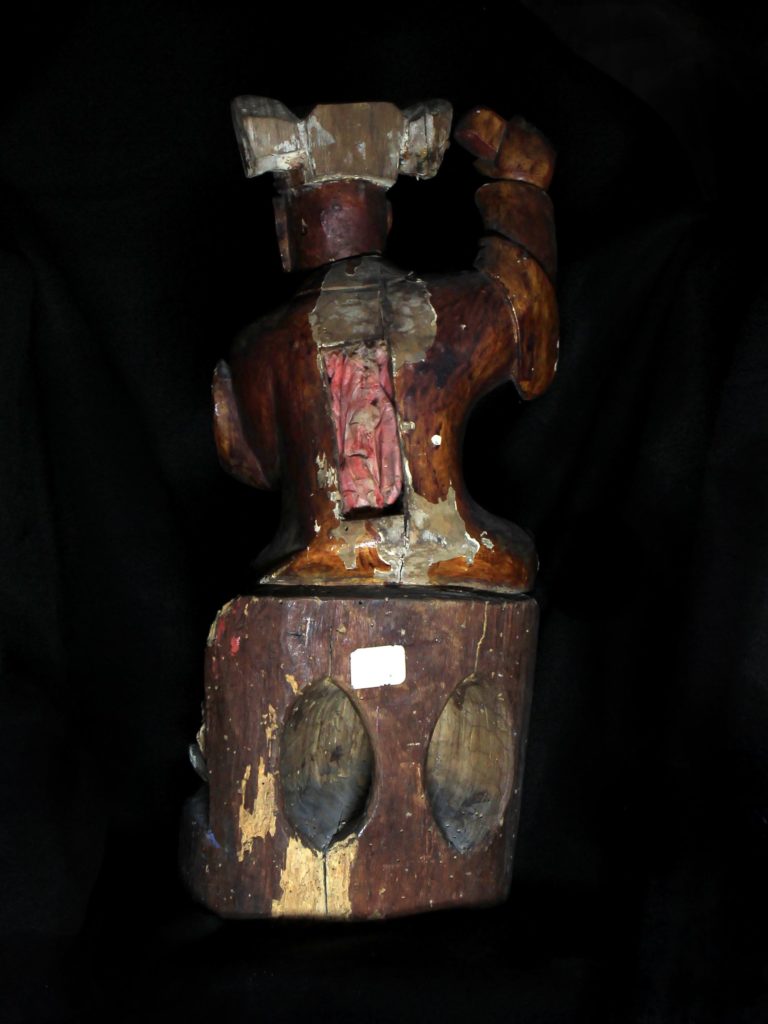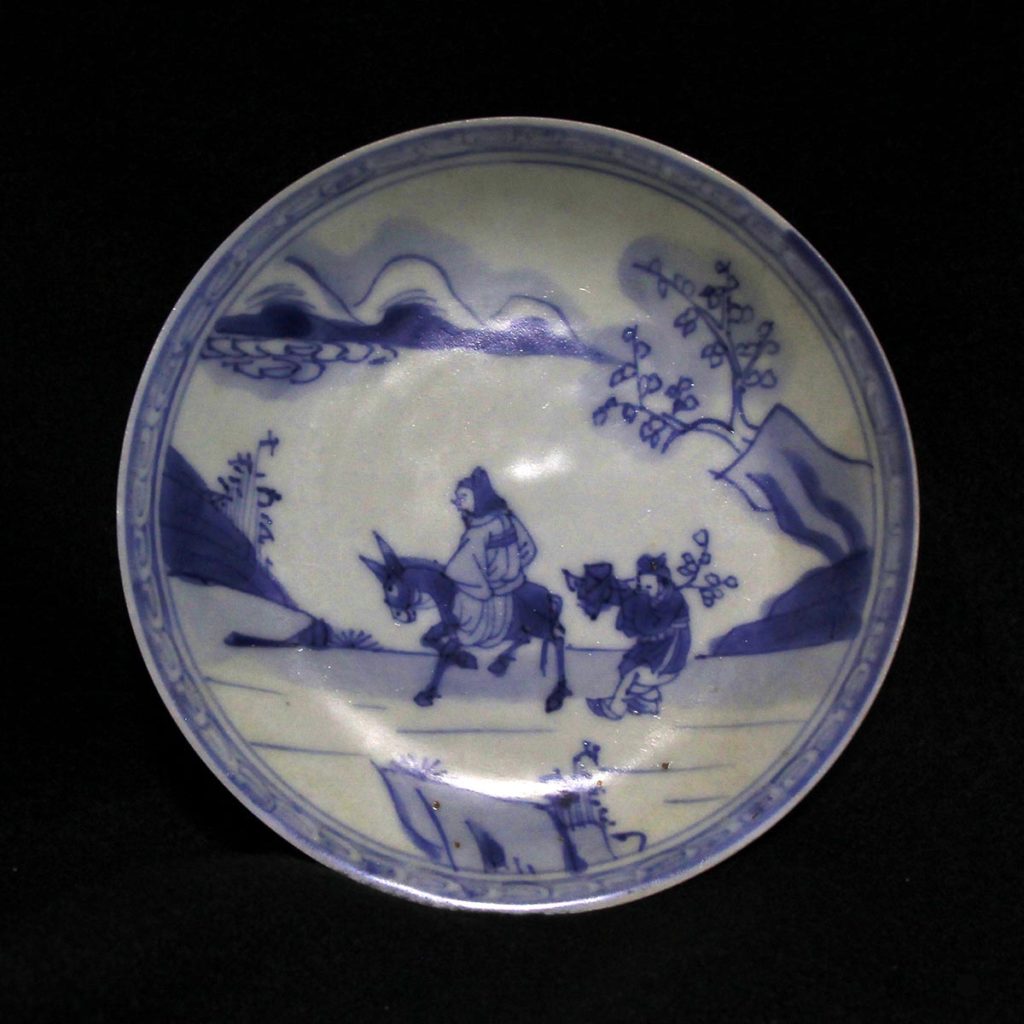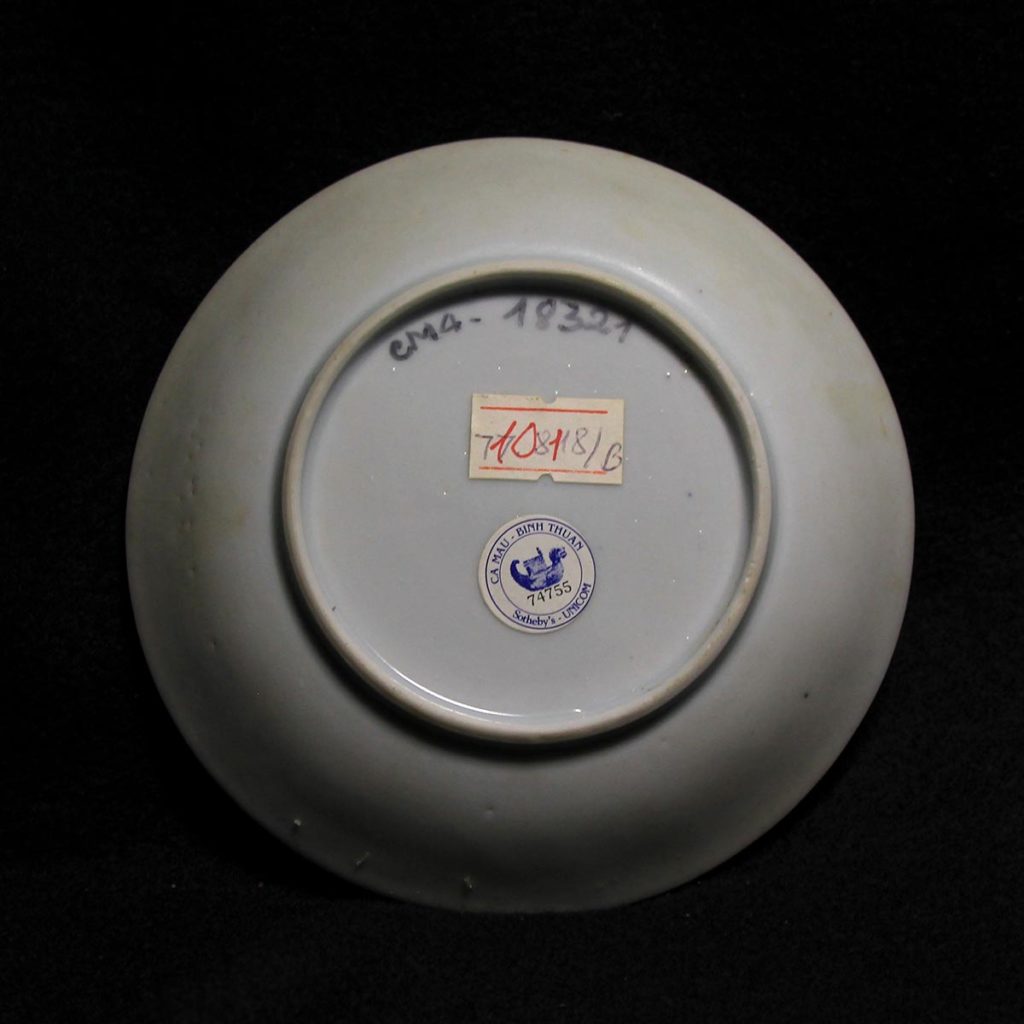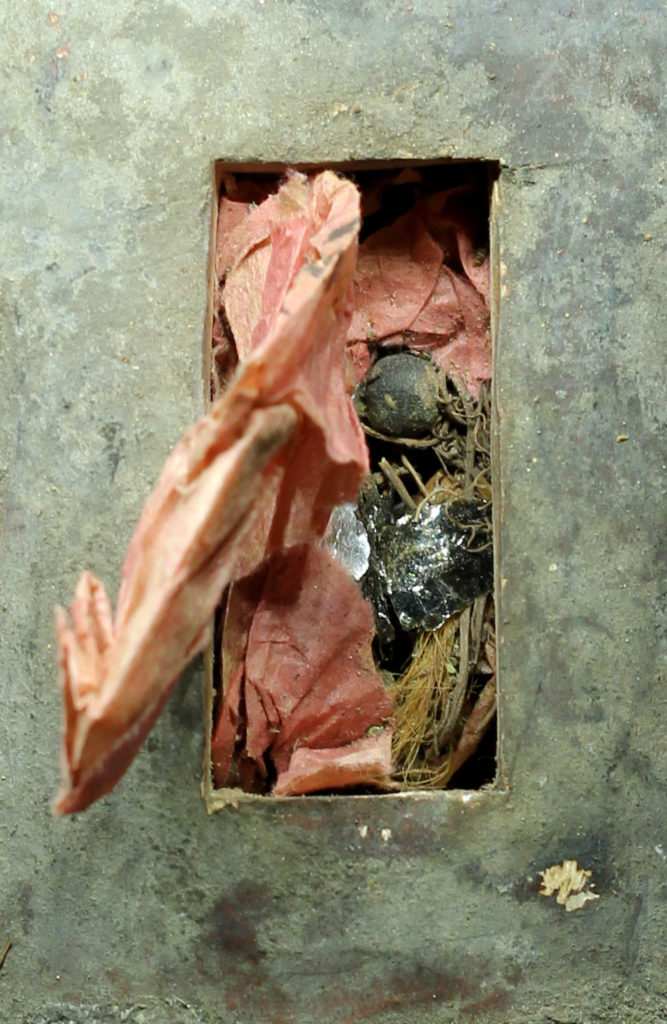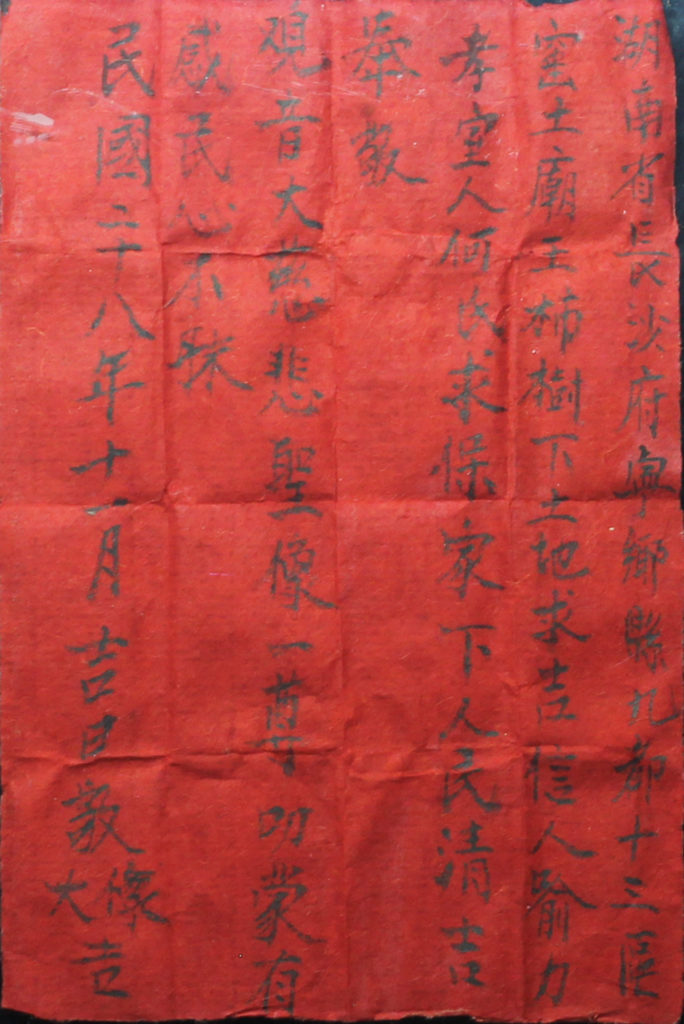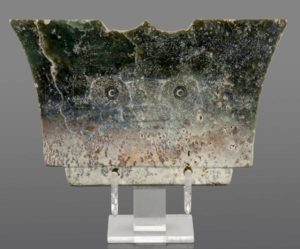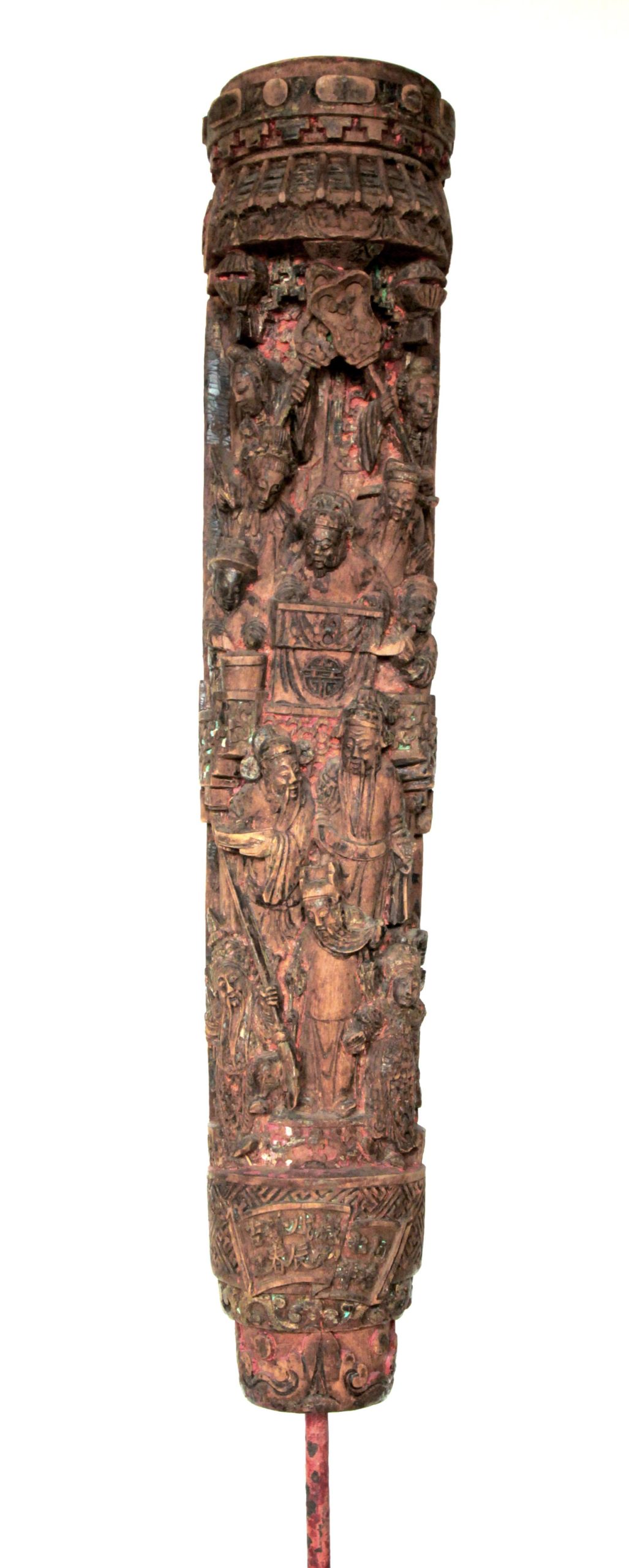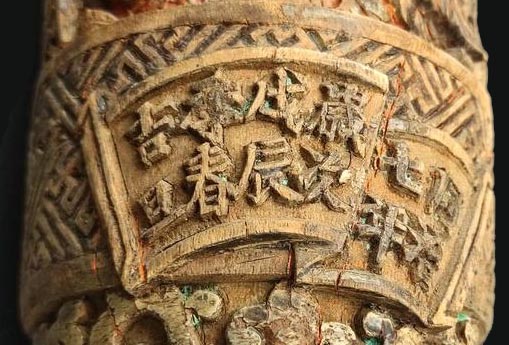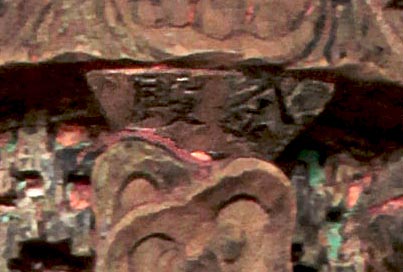Excavation and identification process
Source: http://m.zhuoyixuan.com/article.php?id=18974 (translated by google translate).
Since the 1980s, crown-shaped jade ware (玉冠) has been unearthed many times in Liangzhu culture tombs in Shanghai, Zhejiang, Jiangsu and other places. However, because its purpose was not clear, it has always been called a jade crown-shaped ware (玉冠), or a jade ware.
There have been different opinions in the archaeological community about these inverted trapezoidal devices, crown devices, etc., and there was no consensus. [Curator] Li Lin [of the Haiyan County Museum] said that the understanding of jade crown ornaments gradually became clearer with the increasing abundance of archaeological excavation materials.
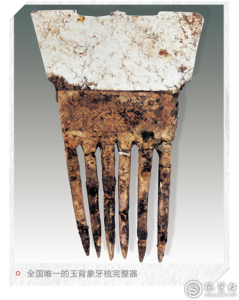 This identification process was long and arduous, and it was not until the crown ornament (玉冠) connected with the ivory comb discovered at the Zhoujiabang (周家浜) site in 1999 that the mystery of its use was really revealed. Therefore, these jade crown ornaments embedded in the upper part of the comb teeth were later called “jade comb back ornaments” (玉背象牙梳).
This identification process was long and arduous, and it was not until the crown ornament (玉冠) connected with the ivory comb discovered at the Zhoujiabang (周家浜) site in 1999 that the mystery of its use was really revealed. Therefore, these jade crown ornaments embedded in the upper part of the comb teeth were later called “jade comb back ornaments” (玉背象牙梳).
The jade-backed ivory comb displayed in the Haiyan County Museum is the first and only complete jade-backed ivory comb unearthed in archaeological excavations.
Object details and interpretation
From the 1970s to the 1990s, many precious cultural relics were frequently unearthed from the Liangzhu Cultural Site, the most notable of which are jades. The preciousness of jades is even more linked to the identity and status of the tomb owner.
There are no specific conclusions about the owner and identity of the jade-backed ivory comb in the Haiyan County Museum. Curator Li Lin said that in all Liangzhu period tombs, many chicken bone white ivory combs similar to this jade-backed ivory comb have been unearthed, and women were not the only ones who wore such decorations during the Liangzhu period. Judging from this, the owner of the tomb who owns the jade-backed ivory comb should not have a high status, and jade-backed ivory combs are not exclusive to nobles.
The whole device is in the shape of an inverted ladder, with a total height of 10.5 cm, a top width of 6.4 cm on the jade back, a width of 4.7 cm on the top of the ivory comb, and a thickness of 0.6 cm. The back of the crown jade comb has turned white as a chicken bone, and it is in the shape of a feather crest, the emblem of the Liangzhu Culture. The upper part of the ivory comb is engraved with mat patterns on the front and back sides, and the lower part is cut and polished to have 6 comb teeth.
The connection between the jade crown and the comb teeth is achieved through a mortise and tenon structure. The jade crown is embedded in the grooves on the comb teeth, and then fixed with rivets through the mortise.
The combs of the Liangzhu culture in the Neolithic Age are quite different from the current combs in that they have a higher back and are often decorated with images of gods. As one of the most distinctive jade ornaments of the Liangzhu Culture, the jade comb back may be more than a simple practical item. It may have an even more important purpose than grooming hair. At present, experts have various research opinions on this. Some people think that the back of the jade comb is a patterned bird-shaped crown, and wizards in the Liangzhu Culture Period may wear bird-shaped crowns for sacrificial activities; It is a ritual vessel related to agriculture to worship gods. Regardless of the point of view, they all mentioned the important symbolic role of crown decorations as ritual vessels in sacrificial activities during the Liangzhu culture
